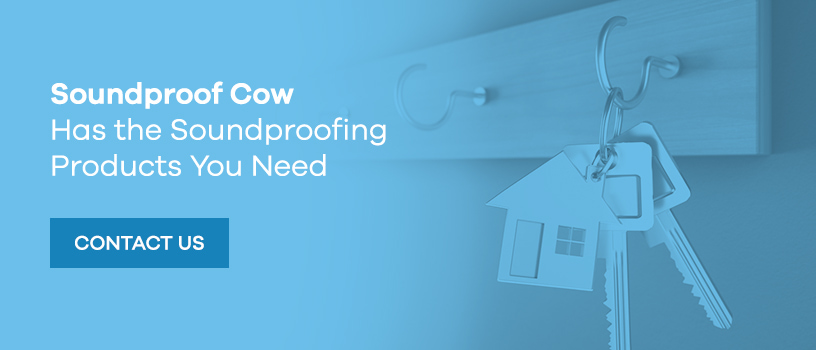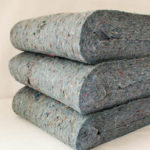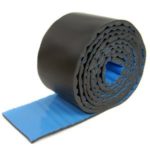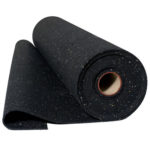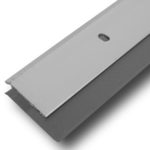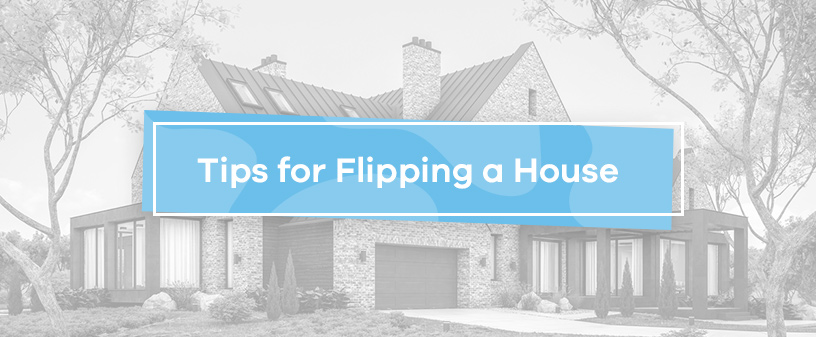
You buy a run-down house, fix it up, sell it and make a ton of profit: Reality TV shows have made DIY house flipping look super easy. As a result, house flipping has become more popular than ever. By the end of 2018, more than 10% of home sales were houses purchased for flipping, the highest percentage since 2002, when people started tracking house flipping.
Although TV makes figuring out how to flip a house look like a piece of cake, it’s not exactly the simplest thing in the world to do. You need to know your market and what to do to make the home you flip into something people want to buy.
Things to Consider Before Purchasing a House to Flip
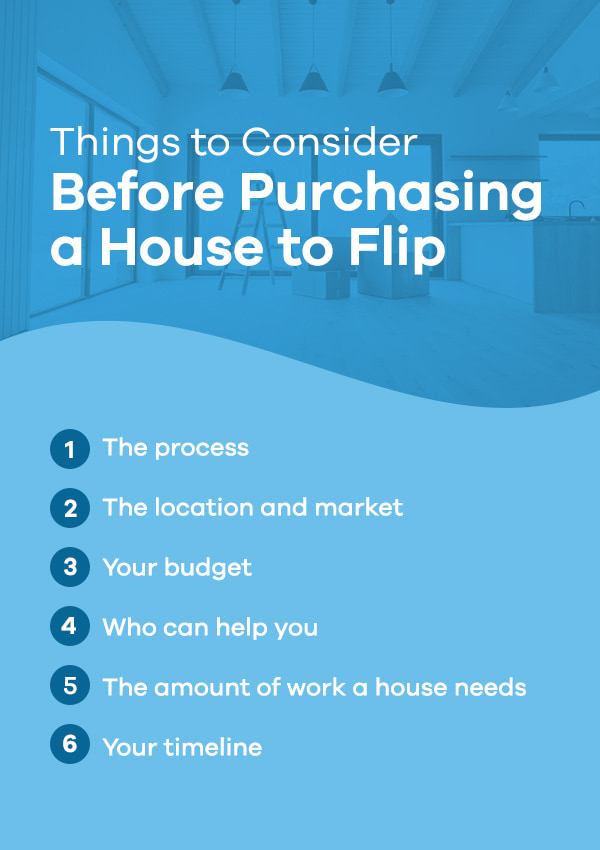
Before you let visions of HGTV stardom get to your head, it’s helpful to spend some time carefully considering house flipping strategies and the best way to get started with your first house flip. Finding a house that’s in need of attention and care is just one part of the flipping process.
Here are a few other things to think about:
- The process: Reality TV gives you the dramatized, glamorous-looking side of house flipping. There’s a lot more to the process that what a 30-minute television program can depict. Before you jump in feet-first, read up on what’s really involved in flipping a house. If you know someone who’s had success as a flipper, ask them how they do it, what to expect and how long each phase usually takes.
- The location and market: Where you plan on buying a house matters when your goal is to flip it. In the U.S., the south and west tend to be the best places to buy and flip. You can still flip houses if you aren’t buying in those areas, though. You’ll just want to adjust your expectations, so you have a realistic idea of how long the sale will take after the house is renovated and how much profit you can expect to earn from the flip.
- Your budget: Another thing to consider is how much you can afford to spend on a house, especially compared to how much you can sell it for after renovations. The cost of renovating the home is another thing to keep in mind. How will you pay for everything? You can apply for a mortgage for the property, but if you can afford to do so, you might find that paying in cash speeds up the process.
- Who can help you: You’re going to want help and support throughout the flipping process. That can mean working with a real estate agent who can help you find the right home, hiring a contractor who can handle the renovations and finding a designer to make the finished home look fantastic.
- The amount of work a house needs: Also consider the amount of work a house needs before it’s ready for sale. The less work, the better, as it means the project will most likely cost less and move more quickly. It’s also important not to go overboard when it comes to updating the home. The more you renovate, the higher your costs and the lower your potential profits.
- Your timeline: What’s your schedule for flipping the house? It’s a good idea to carve out an agenda and set deadlines, but also to give yourself some wiggle room, in case something unexpected comes up.
Home Flipping Tips
The goal of a house flip is to earn a profit. To do that, it helps to know what you’re doing. Once you’ve decided that a career as a house flipper is right for you, here are a few tips to help things go as smoothly as possible.
Pick the Right Renovations
Everyone wants a shiny kitchen and a beautiful bathroom. Updating the kitchen and bathrooms in the house you’re flipping might be important, but it’s also important not to go overboard with those renovations. Instead of going all out or potentially going overboard with a remodel, keep the anticipated value of the home in mind when you’re fixing it up. A more modest update might be all that you need to get the right price for the home. If you go choose updates that are too-high-end or luxurious, you might end up spending more than you’ll recoup from the sale.
When choosing what to renovate in the house, it can be helpful to have an idea of how the value of a renovation compares to its cost. Less glamorous updates, such as replacing a garage door, entry door or windows, tend to have a higher return compared to more luxurious renovations, such as adding a master suite or upgrading to a high-end kitchen.
Start Small
When flipping a house, it pays to start small. Rather than buy a house that needs significant repairs or that has structural issues, choose one that needs a few modest updates. It’s all too easy to wade in over your head when you’re flipping a house, so your best option is to limit the work that needs to be done on the property. Pick a house with ugly paint and carpet and outdated detailing rather than one that has mold or mildew problems or a busted foundation.
As you get more confident in your skills as a house flipper, you can start taking on more and more complex projects. But be careful not to bite off more than you can chew in the beginning.
Choose the Worst Home in the Best Area
“Location, location, location” is the mantra of real estate agents around the world for a reason. While you can always change details about the home itself, there’s little you can do to improve the neighborhood or overall location. When shopping for a property, pay attention to what’s around it. Are the other houses on the block attractive and well-cared-for? Are there amenities nearby, such as a park or grocery store? Look at the big picture when you’re picking a house and choose one that’s in an area that’s in demand and where people want to live.
Budget Carefully
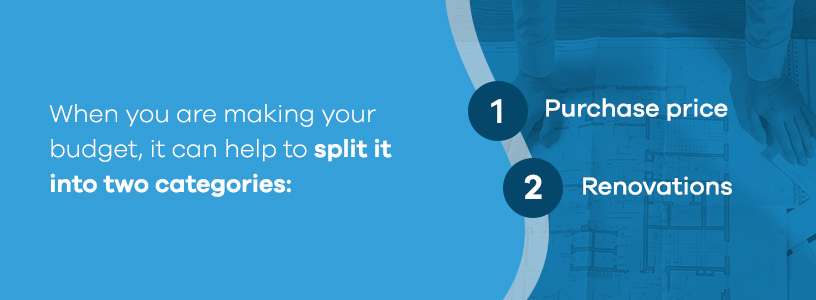
One of the keys to house flipping is to budget carefully, which means budgeting much more than you plan to spend on the project. Renovations often end up costing more than anticipated. If you want to be really careful and conservative, one recommendation is to create a budget, then multiply it by five, so you have enough money to cover any and all costs.
When you are making your budget, it can help to split it into two categories — purchase price and renovations. The purchase price is what you pay to buy the house itself, while the renovations category covers any expense connected with improving the home.
Connect With Someone Who’s Been There Before
You don’t have to flip your first home on your own. It can be useful to shadow a more experienced house flipper or to find someone with experience in the industry who’s willing to act as your mentor and show you the ropes. You might observe how they manage a house flip before you jump in and buy a home of your home to renovate and resell. Or you might see if they have room on their team for a trainee.
Keep Your Emotions out of It
There’s a big difference between buying a home for yourself and buying a home as an investment. Remember to keep your emotions and personal tastes out of the equation. Don’t get too attached to the home or any particular design ideas. You might need to cut back on certain ideas or projects based on timing and your budget. Getting emotionally attached to the house can make it difficult to sell once the project is over.
Remember that flipping houses is a job like any other. You can take ideas from your renovation projects back to your own home, but do your best to keep the two separate.
Why You Should Consider Soundproofing When Flipping a House
People want their home to be a refuge from the busy, bustling world around them. It can be tricky to find peace-and-quiet at home when you can hear the cars zooming by in the streets or the neighbors’ picnics and conversations next door. When you’re renovating a house to flip, it’s a smart idea to add soundproofing to the home.
Soundproofing a home doesn’t just keep outside noise, such as traffic sounds, out. It can also help to slow the spread of noise within a house. People living in a soundproofed home won’t be able to hear the TV blaring in the living room when they’re in their bedrooms. A parent working in a home office won’t be able to hear their child practicing guitar or trombone in the den.
From a health perspective, soundproofing is a plus. Unwelcome noise, such as a radio or television playing while a person’s trying to sleep or a dog that barks all day long, can increase a person’s stress levels. Over time, elevated stress levels can increase inflammation in the arteries, leading to an increased risk of strokes and heart attacks.
Soundproofing can be a major selling point for the house, especially if it’s located in a busy area or near sources of noise. For example, if you purchased a home near railroad tracks, adding soundproofing can convince people that they can live comfortably and quietly in the home. You might want to schedule viewings of the home for times when a train is likely to roar past to demonstrate how effective the soundproofing is.
When you soundproof a property, you might be able to get more for it compared to a non-soundproofed home. People will pay to live in a house where they can’t hear their neighbors or won’t be bothered by the sounds of footsteps on the upper floors.
Best Products for Soundproofing a Home
The best way to soundproof a house you’re flipping is during the renovation itself. Several products are available to block the transmission of sound from one floor of the house to the other or from outside of the house to the inside. Soundproofing products can also help stop the spread of sound from one room to the next. Some of the best products to use during your remodel to soundproof the house include:
1. Quiet Batt®
Quiet Batt® lets you take care of two house concerns in one fell swoop: insulation and soundproofing. The material is made from 80% recycled cotton and is designed for use anywhere you’d use traditional fiberglass insulation, such as between studs on the inside of drywall walls. You can also install the insulation in ceilings or beneath the floor to dampen sounds between stories.
The insulation also helps to regulate the temperature. In the winter, the insulation can help to keep warm air indoors. In the summer, it can keep hot air out of the home. The result is a house that’s peaceful and energy-efficient.
2. Quiet Wrap™
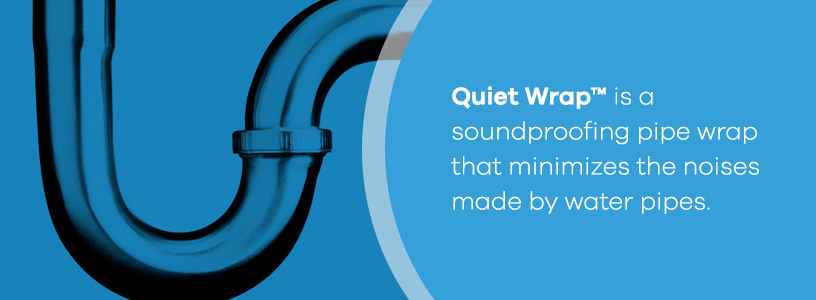
Some pipes are louder than others. They might rattle, shake or thump as water courses through them. In some cases, the water rushing through a pipe can be the source of the noise. Quiet Wrap™ is a soundproofing pipe wrap that minimizes the noises made by water pipes. The wrap encases pipes of all sizes and materials and blocks the sound. People living in a house where the pipes are surrounded by Quiet Wrap™ can rest assured that they won’t be woken up in the middle of the night by the sound of someone else taking a shower or turning on the kitchen sink.
You don’t have to remove the existing pipework in a house to install the wrap. It’s designed for use on existing pipes and can be added to new pipes. The wrap is relatively easy to install, too.
3. Flooring Underlayment
Whether you’re fixing up and flipping a multi-family property or a single-family home, it’s a good idea to soundproof the floors, especially in houses with more than one story. When there’s no soundproofing, noises like footsteps can become amplified as they travel through the floor and ceiling. A small child walking around their bedroom can sound like a giant stomping around up above. Someone sliding back in a chair on the second story can sound like a grating, screeching noise to the person in the room below.
One way to dampen sound is to install carpeting instead of hardwood, laminate or tile. If you don’t want carpet in a room, you still have options for soundproofing. You can install flooring underlayment beneath hard floors to block sounds. Like soundproofing insulation, flooring underlayment provides a benefit beyond blocking noise. It also helps to regulate the temperature in a room. Floors with underlayment installed tend to feel warmer beneath the feet, which can be a comfort to residents in the winter.
4. Door Sweeps
Sound can also travel through doorways, both on the interior and exterior of a home. Door sweeps and perimeter seals help to create a tight bond between the door and its frame, limiting the transfer of noise through the doorway. When renovating a home, you can install door sweeps and seals to the interior doors to create soundproof rooms that are perfect for work or study. You can also place sweeps and seals on exterior doors to keep traffic noises, the sound of chatty neighbors and other outdoor sounds out of a house.
Soundproof Cow Has the Soundproofing Products You Need to Successfully Flip Houses
Soundproofing the house you’re flipping can help to make the finished property more desirable to home buyers. If you’re not sure the best way to go about soundproofing your next flip or what products will provide the best protection against noise, Soundproof Cow can help. We’ll work with you to help you pick the products that will work best for the property and that will help the future homeowner enjoy a peaceful, quiet home. Contact us today for more details.


